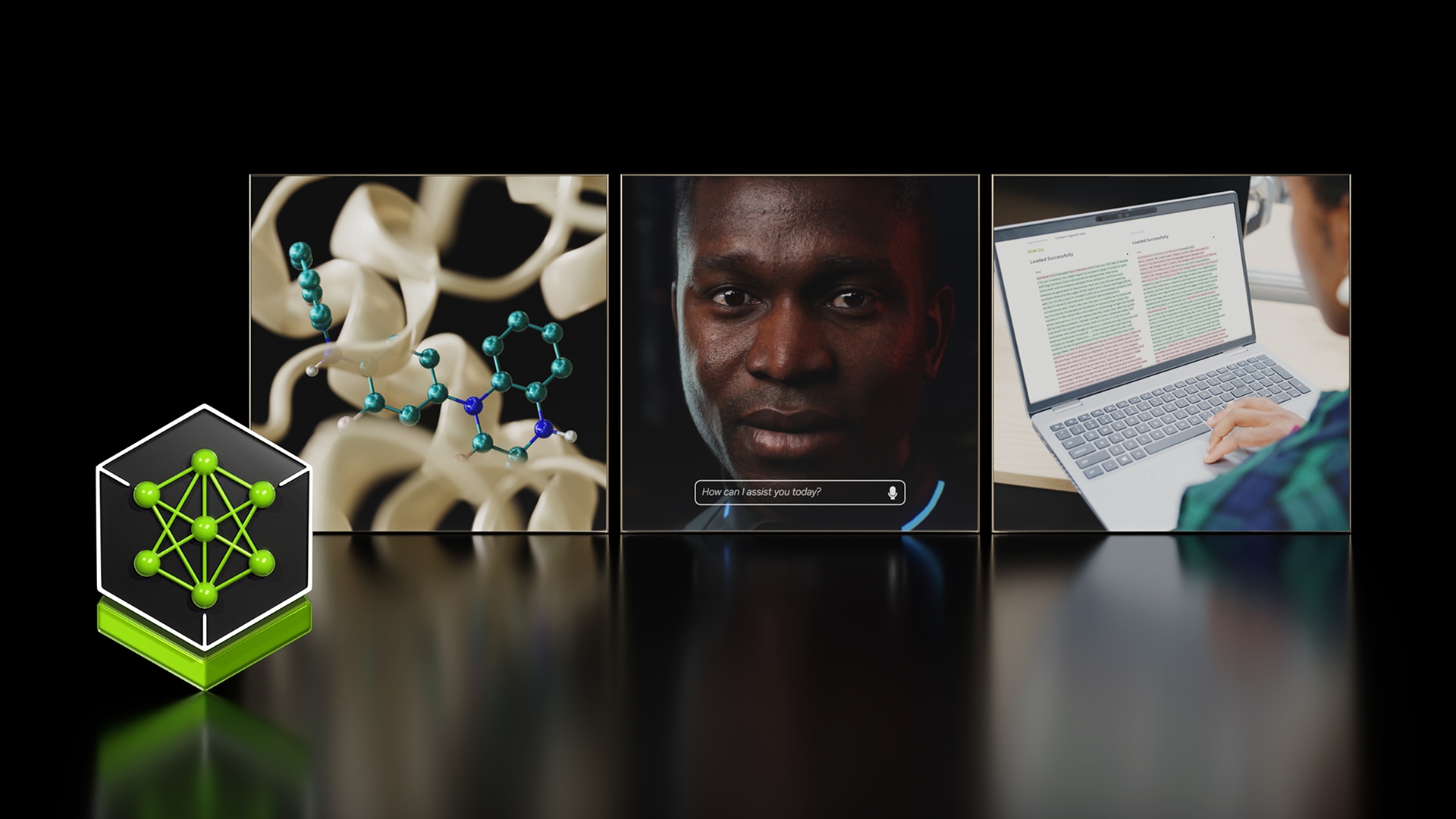NVIDIA Boosts AI Development for Enterprise Use

NVIDIA enhanced its enterprise AI offerings with the release this week of NIM Agent Blueprints, a series of pre-fabricated but customizable workflows designed to streamline AI application development. NVIDIA is also offering enterprises lots of help creating “AI flywheels” based on its broad range of AI platforms and products.
Let’s start with the basics: NIM Agent Blueprints are packages containing everything an enterprise requires to generate an AI app: sample applications, reference code, documentation for help with customization, even Helm charts to help with deployment.
Companies add their own data to the mix to create generative AI applications. When paired with other NVIDIA products (more on that in a moment), NIM Agent Blueprints help create an ongoing cycle of data ingestion, inference, and application improvement—an AI flywheel.
Initially, the NIM Agent Blueprints include a workflow that creates a digital human for use in customer service chatbots, a workflow for drug discovery, and a “multimodal PDF data extraction workflow” for retrieval-augmented generation (RAG). New blueprints will be added on a monthly cadence, NVIDIA said.

Source: NVIDIA
A New Level of AI Help
NVIDIA’s been focused on pushing enterprise adoption of generative AI, which is a complex undertaking requiring a range of sophisticated and highly specialized technologies. Since the skills required are missing from many companies, NVIDIA's focused on making the processes needed more digestible for developers.
This was the idea behind the release in March of NVIDIA Inference Microservices (NIMs), cloud-native microservices designed to hook into a range of enterprise applications (including SAP, Adobe, ServiceNow, Cadence, and Crowdstrike) to offer a development platform for GenAI. Now NVIDIA plans to boost NIMs with the app-specific NIM Agent Blueprints, which also draw on technology from NVIDIA’s NeMo platform for GenAI model development.
Blueprints Work in a Broader NVIDIA AI Context
The NIM Agent Blueprints are downloadable for free for interested developers. But for production use, enterprises will need a lot more than just the blueprints. For instance, to create production-ready AI apps, NVIDIA requires its NVIDIA AI Enterprise development platform. Among other features and functions, this platform includes NIMs as well as NVIDIA CUDA-X microservices, which are designed for developing apps for use with NVIDIA GPUs.
There’s a plethora of other products that work with NIM Agent Blueprints. The AI flywheel concept, for instance, is based on the use of NVIDIA NeMo and NVIDIA AI Foundry, which supports the development and deployment of GenAI models. And the NIM Agent Blueprint for customer service is based on NVIDIA’s Tokkio Reference Workflow, which in turn incorporates a bunch of NVIDIA technologies for creating virtual humans.
You get the idea. The NIM Agent Blueprints are part of the larger context of NVIDIA CUDA (Compute Unified Device Architecture), the vendor’s software layer that allows applications to interact with its GPUs. One product leads to another and another. All together, they streamline AI inference and the creation of GenAI for enterprise customers.
A Wide-Ranging Ecosystem
NVIDIA’s single-vendor solution may be restricted to its own fundamental platforms, but the vendor has a comprehensive ecosystem of partners, including ones that specialize in NVIDIA AI, such as NVIDIA GPU service providers CoreWeave and Lambda, among others.
Also, as noted, many companies don’t have the expertise on board to navigate all of NVIDIA’s products and platforms, as well as those of ecosystem partners, so NVIDIA has enlisted Accenture, Deloitte, SoftServe, and WorldWide Technology, as well as vendors Cisco, Dell Technologies, Hewlett Packard Enterprise, and Lenovo to assist customers.
Indeed, is there any major tech vendor that hasn’t got a partnership with NVIDIA? The vendor’s mesh of APIs and integrations ensures that despite relying on its own technologies, NVIDIA is casting a wide net of compatibilities.
With this announcement, NVIDIA is also casting a wider net for customers. While some enterprises may not be ready to make the commitment needed to take full advantage of NVIDIA’s capabilities, no other firm can match NVIDIA’s variety and level of comprehensive full-stack detail in developing GenAI apps.
Futuriom Take: NVIDIA’s NIM Agent Blueprints further the vendor’s support of AI inferencing and GenAI application development for enterprise use. While some companies will balk at the commitment to NVIDIA products these solutions require, others could welcome the advantages of shifting to NVIDIA’s platforms.
















